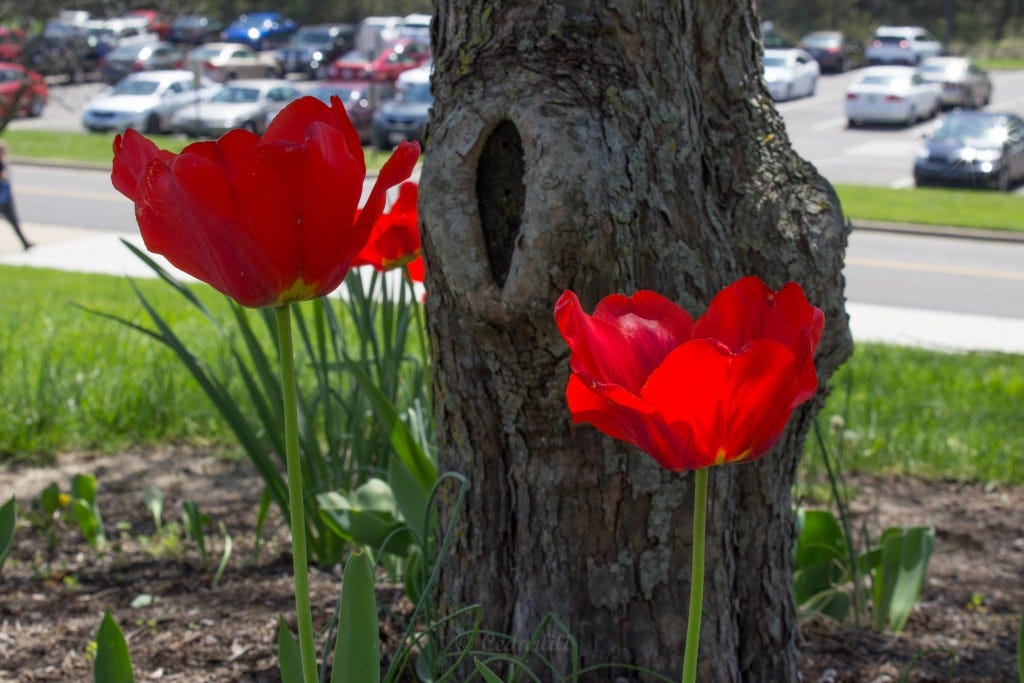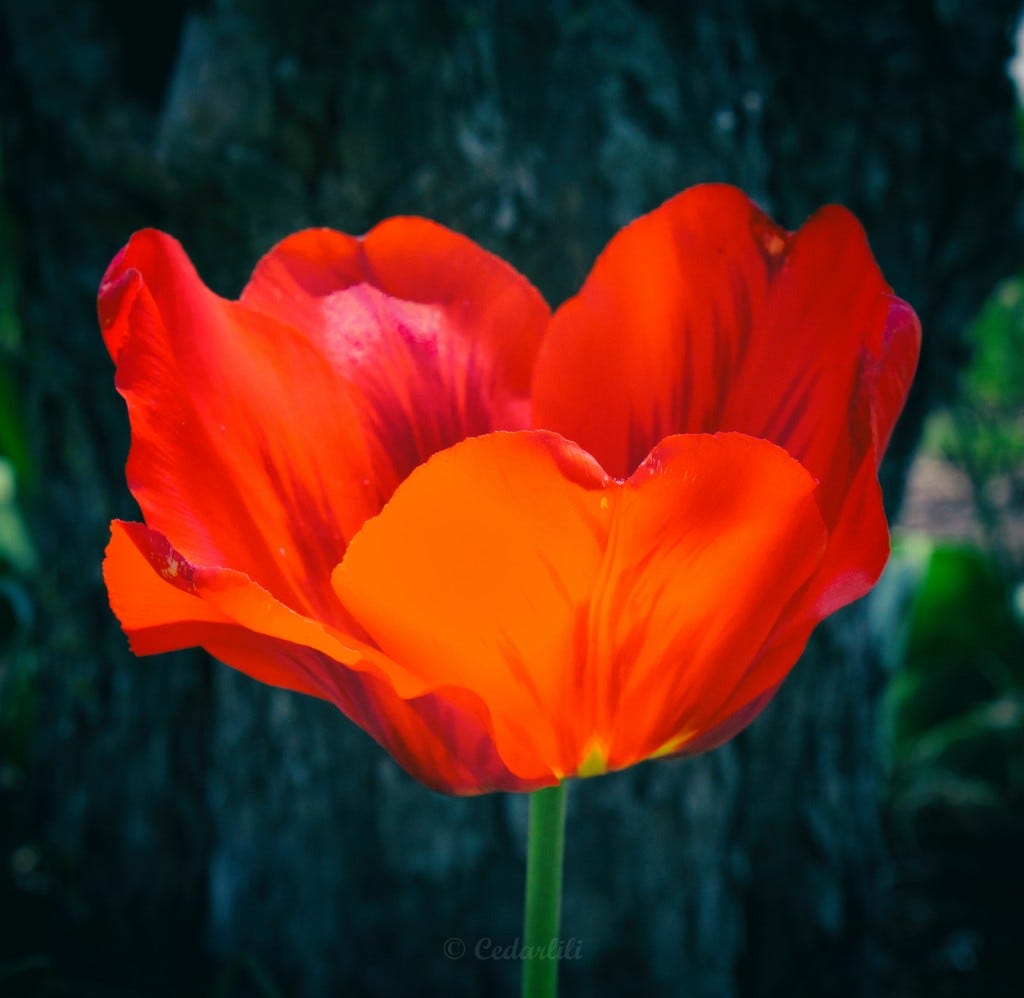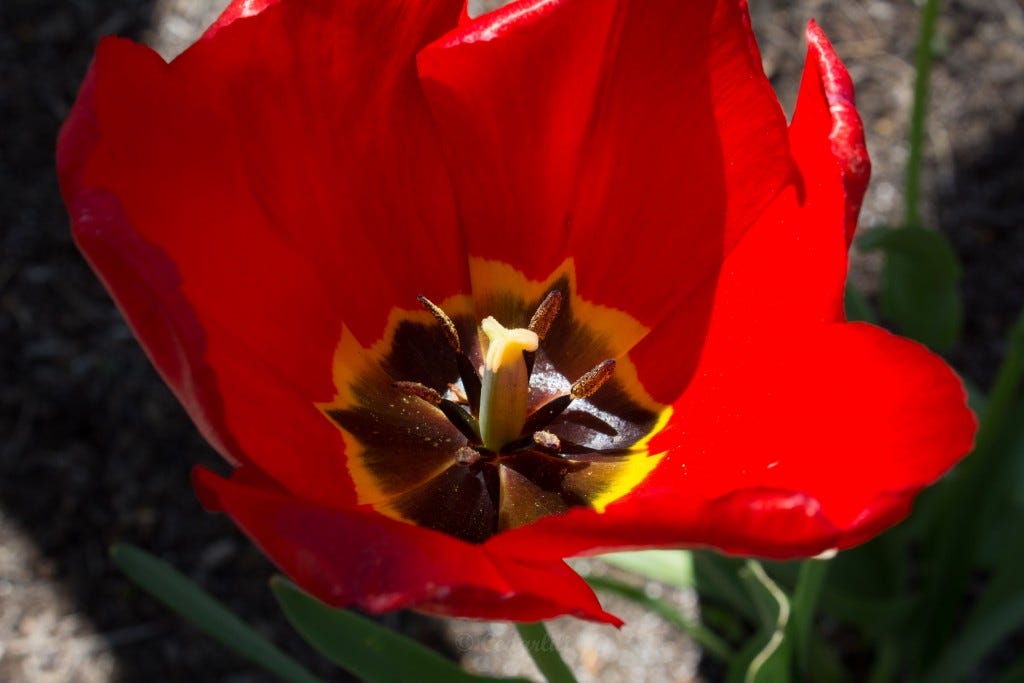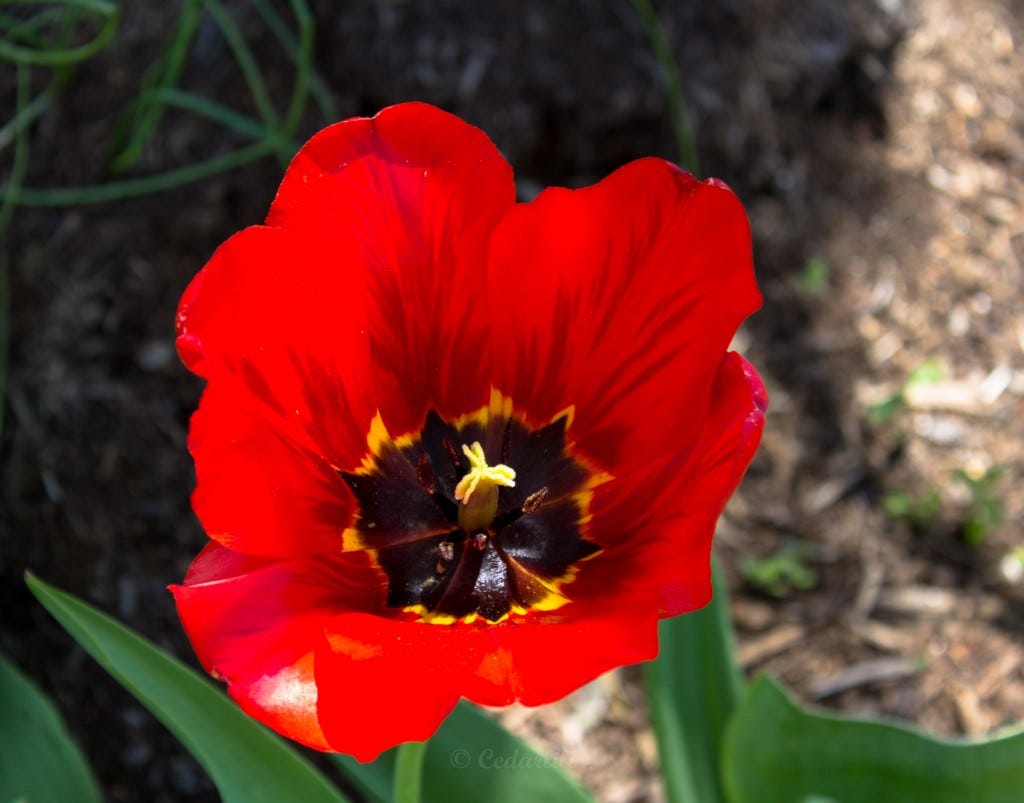A Broken Tulip
As I was making my way through my day, I stole a moment to smell the roses - not literally, they aren't yet blooming - and I photographed tulips. There are a handful in glorious bloom on my campus, and I felt a bit conspicuous as I made my way through the grass to take close-up portraits of the crimson beauties. There's no sign to stay off the grass, but I never see people walking on it, as well trained as our society is to stay on the paths...

Pretty red tulips on campus
From a distance the tulips are small clumps of red flags planted around the base of trees. Closer in, the details of the flower construction and colors reveal themselves. This was what I wanted to capture. I've been passionate about plants since I was very young, but I've never been as passionate as the tulip fanciers who drove themselves to financial ruin in the tulip bubble so charmingly dubbed "Tulipmania" in the 1630s. The driving force behind the elusive blooms fanciers thought they could capture was not from cultivation and heredity, but from a virus.

A broken tulip aflame with the characteristic marks of the virus.
This came to mind today as I noted that some of the red tulips, up close, had flames of red-on-red in their petals, a characteristic of 'broken' tulips that are infected with the virus. In the 1600's, no one knew about viruses, much less that they could affect plants. From an article in Virology:
"We now know that these colorful patterns are caused by infection with potyviruses, which are filamentous plant viruses with positive-strand RNA genomes. The specific viruses involved are tulip-breaking virus, tulip top-breaking virus, tulip bandbreaking virus, and Rembrandt tulip-breaking virus. Lilies may also be patterned by infection with Lily mottle virus. These viruses infect the bulb and cause the single color to break, leading to bars, stripes, streaks, featherings or flame-like effects of different colors on the petals. These effects are caused by altered distribution of pigments in the petal caused by virus replication."

An unbroken tulip, with smooth red coloration. During Tulipmania, they did discover that the sought-after streaked effects could be transferred from plant to plant by grafting - in essence, they were infecting plants with the virus, in order to create art. Wildly unpredictable, the results were sometimes nearly priceless.. but the strains they created were weak, and most are now extinct. The virus may bring beauty with it, but it also weakens the plant and eventually kills it.
If you're interested in exploring the chemistry and molecular effects behind what makes a flower colorful, and why TBV (tulip breaking virus) affect color as it does, this article delves into it and it is a fascinating read. For the rest of you, simply enjoy the wild art that a virus creates in a tulip as it breaks the smooth flow of petals in leaping flames of color.
Flower color is largely determined by the differential accumulation of plant pigments called anthocyanins. A large spectrum of anthocyanins exhibiting different colors exists, but no one plant is capable of producing the full spectrum. Thus, color potential varies among plant species. The biochemistry and enzymology of the pathway leading to anthocyanin production is well understood, and virtually all the genes that encode the enzymes of biosynthesis have been isolated .
The painterly pathology of the potyviruses that induce color breaking in tulips reflects their ability to interfere with the accumulation of anthocyanins in the tulip flower petals. It should be reiterated here that, in addition to anthocyanin accumulation, there are other factors that determine flower color, including vacuolar pH, cell shape, and co-pigmentation.

The black at the base of the petals is natural.




